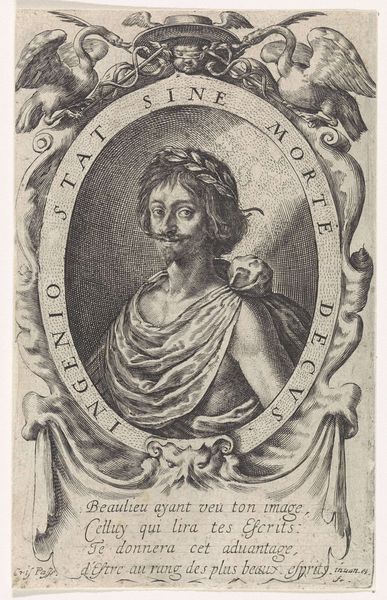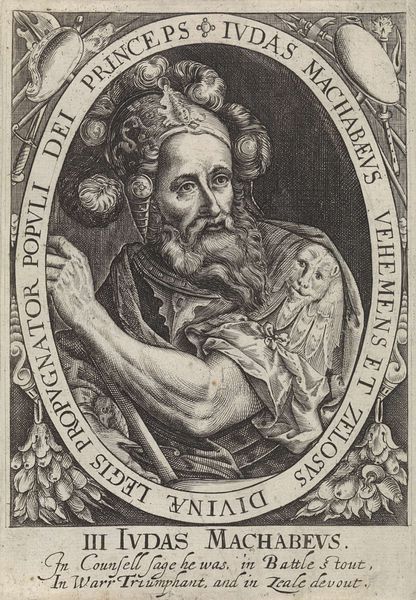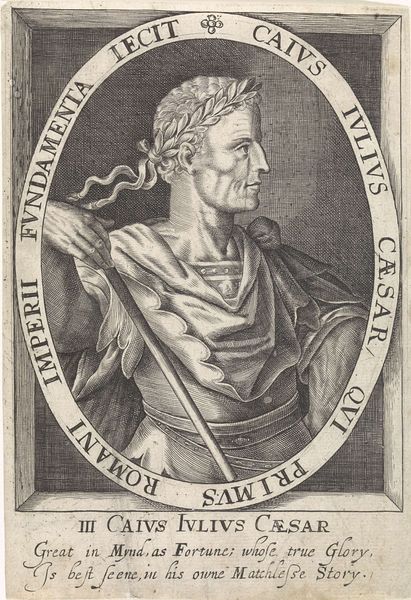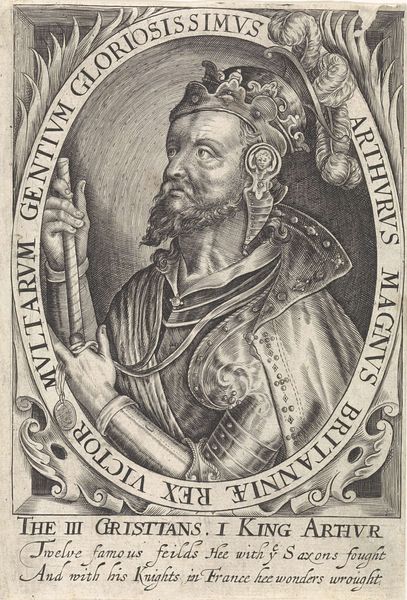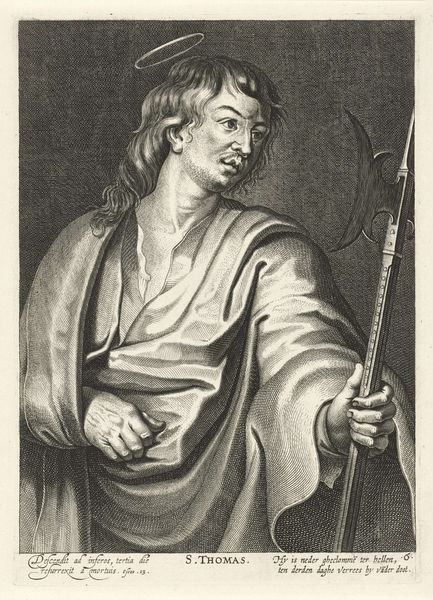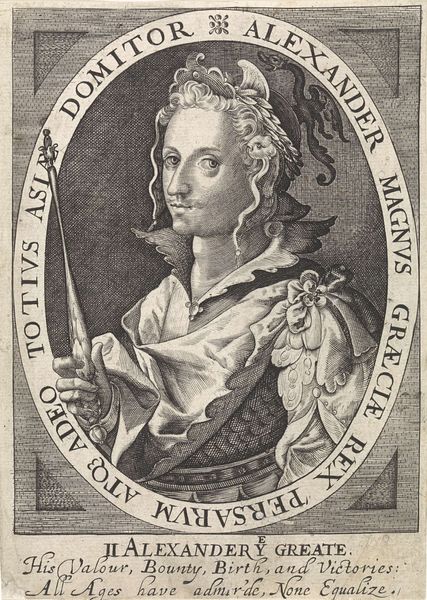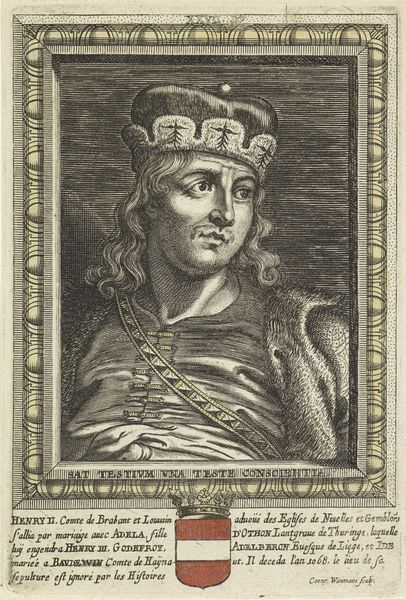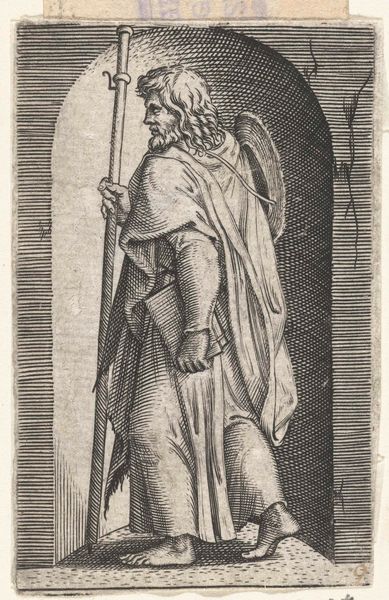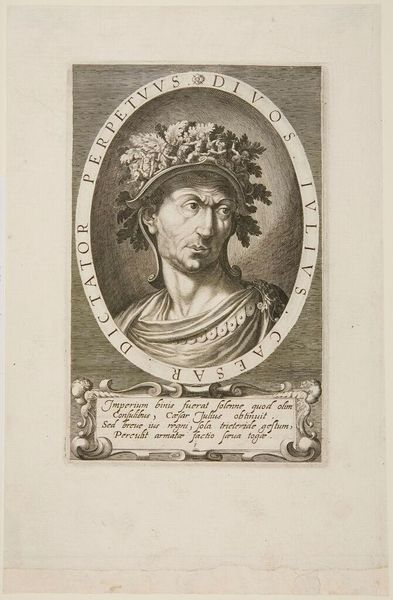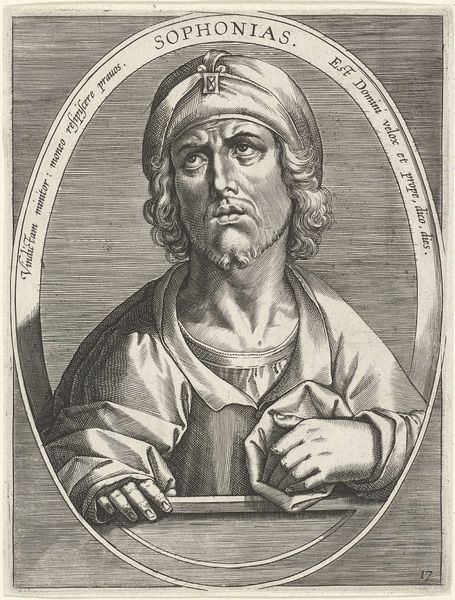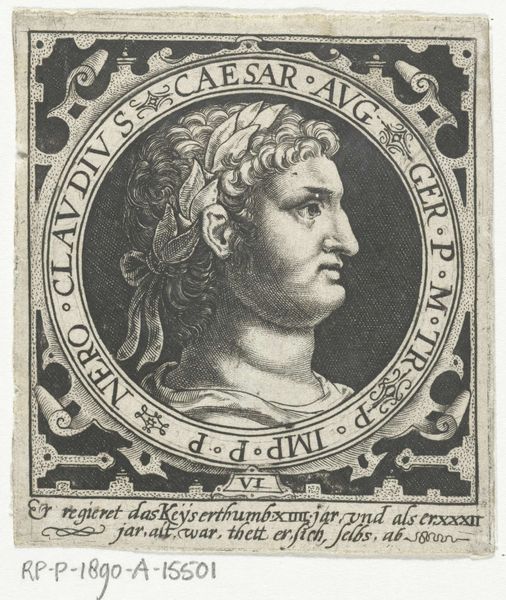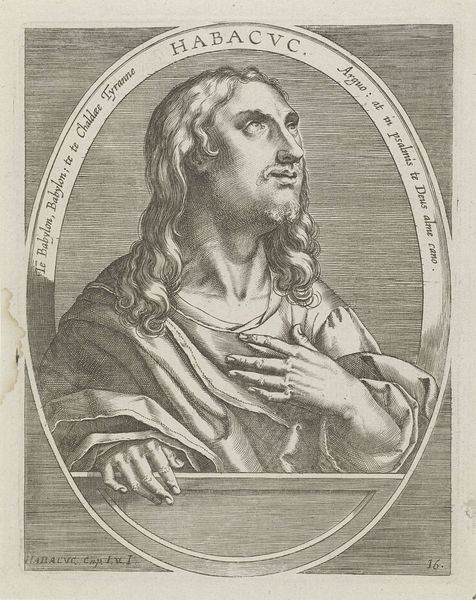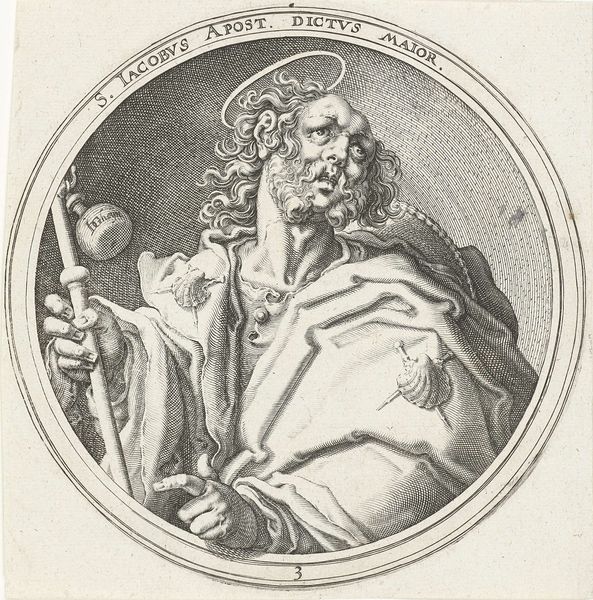
print, engraving
#
portrait
#
baroque
# print
#
greek-and-roman-art
#
history-painting
#
engraving
Dimensions: height 177 mm, width 127 mm
Copyright: Rijks Museum: Open Domain
Editor: So here we have Willem de Passe's engraving of Hector of Troy, dating from the early 17th century. It’s… striking. He seems imposing, almost like a Roman emperor, yet the fine lines of the engraving lend a certain fragility. What do you make of it? Curator: Fragility and strength intertwined—I love that observation! It reminds me of how history itself feels sometimes. Consider the engraving, a medium itself echoing a kind of idealized permanence, yet capturing the fleeting nature of Troy’s existence. Notice his helmet, adorned with images of both power and, arguably, doom: a soaring eagle, a laurel wreath, but also tiny, sorrowful faces worked into the metal. Doesn't that suggest an awareness of mortality, a premonition, even in the face of grandeur? Editor: I didn’t pick up on that nuance with the faces in his helmet at all. They add another layer of melancholy to it. I suppose I focused more on the heroic depiction, spear in hand, ready for battle, than on his internal, or perhaps fateful, experience. Curator: Exactly! The Baroque loved that dramatic tension, didn’t it? To show both the external facade and internal depths. But think, too, about the text surrounding him. It frames him, literally and figuratively, yet its certainty – “Hector of Troy” – sits uneasily beside our modern understanding of legend versus history. How much do we really *know* about Hector? Does that impact how we see the print? Editor: It's fascinating how the piece exists between history and myth, then gets further filtered through de Passe's 17th-century lens. Thanks! This gave me so much more to think about. Curator: And you me! Art’s like a time machine, right? Keeps morphing its shape.
Comments
No comments
Be the first to comment and join the conversation on the ultimate creative platform.
